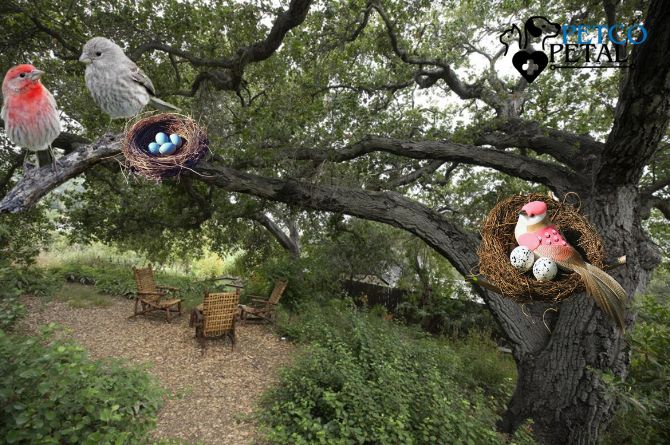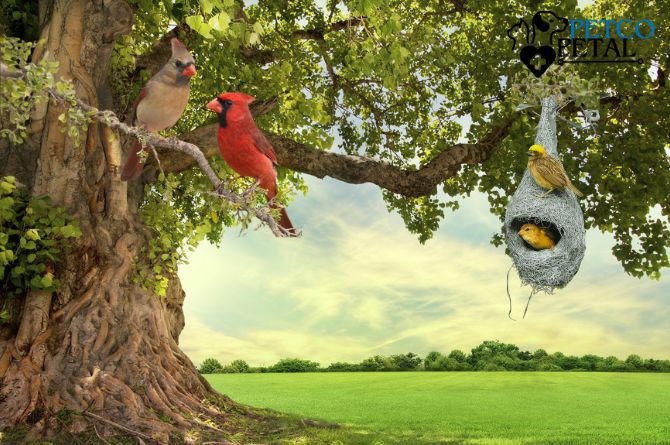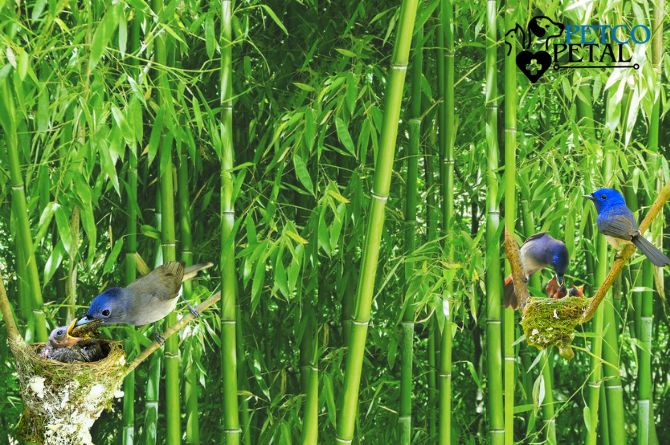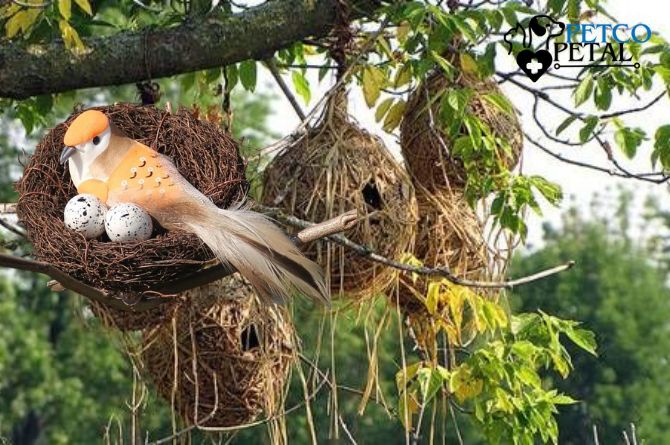Introduction
Understanding the nesting season for birds is crucial for both bird enthusiasts and conservationists. This period is essential in the life cycle of birds as it involves breeding, raising offspring, and ensuring the survival of future generations. By learning about the nesting season, you can enhance your birdwatching experience, allowing you to observe and appreciate these fascinating behaviors up close. Additionally, knowledge of the nesting season aids in conservation efforts by helping to identify and protect critical habitats and minimize disturbances that could impact the birds’ reproductive success. Whether you’re a seasoned birdwatcher or new to the world of avian observation, understanding when and why birds nest provides valuable insights into their lives and helps support their well-being.
What is Nesting Season for Birds?

Definition and Explanation of Nesting Season for Birds
The nesting season for birds is a specific period during which birds engage in activities related to reproduction. This season typically involves several stages, including courtship, nest building, egg laying, incubation, and raising the chicks. During this time, birds are highly focused on ensuring the survival of their offspring, and their behavior and activities are centered around these reproductive tasks.
Nesting season can vary significantly among bird species, influenced by factors such as geographic location, climate, and environmental conditions. For many birds, nesting season coincides with spring and early summer, when food resources are abundant and weather conditions are favorable for raising young.
Importance of the Nesting Season in the Life Cycle of Birds
The nesting season for birds is a critical phase in their life cycle as it directly impacts their reproductive success and population dynamics. During this time, birds invest significant energy and effort into finding suitable nesting sites, constructing nests, and ensuring the safety and well-being of their eggs and chicks.
This period is vital for the continuation of bird species, as it determines their ability to produce and nurture the next generation. Successful nesting contributes to the growth of bird populations, while failures or disturbances can have adverse effects on their numbers. Understanding the nesting season helps in implementing effective conservation measures, protecting nesting sites, and minimizing human impact on these essential activities.
General Timeline of Nesting Season
Overview of the Typical Nesting Season for Birds in Various Regions
The nesting season for birds varies depending on the region and its specific climatic conditions. Here’s a general overview of when birds typically nest in different parts of the world:
Northern Hemisphere
In the Northern Hemisphere, the nesting season for birds usually begins in early spring and extends through the summer. This period aligns with the warming temperatures and increased availability of food resources, which are crucial for feeding both the adult birds and their young.
Spring (March to May): Most birds start their courtship and nesting activities as the weather warms up. This is when many species build nests and lay eggs.
Summer (June to August): The height of the nesting season, where many birds are actively incubating eggs and raising their chicks. By late summer, many bird species will have completed their nesting activities and may start preparing for migration if they are migratory species.
Southern Hemisphere
In the Southern Hemisphere, the nesting season for birds typically occurs during the opposite months compared to the Northern Hemisphere, due to the reversed seasonal patterns.
Spring (September to November): Birds begin their nesting activities as the weather improves and food becomes more plentiful. This is a common time for courtship, nest building, and egg laying.
Summer (December to February): The peak of the nesting season, with many birds hatching and raising their chicks. By the end of summer, birds often complete their nesting activities and prepare for the non-breeding season.
Understanding these general timelines helps bird enthusiasts and conservationists track and support the nesting activities of birds in their respective regions.
Factors Affecting Nesting Season
How Weather and Climate Impact the Nesting Season for Birds
The nesting season for birds is highly influenced by weather and climate conditions. These factors can significantly affect the timing and success of nesting activities:
Temperature: Extreme temperatures, whether too hot or too cold, can impact birds’ ability to nest successfully. For instance, unusually cold weather in spring can delay the onset of nesting, while excessive heat can affect the health of eggs and chicks.
Precipitation: Heavy rain or prolonged wet conditions can make it difficult for birds to find suitable nesting sites and can increase the risk of nest failure due to flooding or exposure. Conversely, drought conditions can limit food availability, impacting the birds’ ability to feed their young.
Climate Change: Long-term changes in climate can shift the timing and duration of the nesting season for birds. Altered weather patterns can lead to mismatches between the timing of nesting and the availability of resources, potentially affecting reproductive success.
Influence of Daylight Length and Temperature Changes on Nesting Patterns
Daylight length and temperature fluctuations play crucial roles in determining the nesting season for birds:
Daylight Length: Birds are sensitive to changes in daylight length, which helps regulate their internal biological clocks and signals the start of the nesting season. Longer daylight hours in spring and summer typically trigger hormonal changes that initiate courtship and nesting behaviors.
Temperature Changes: Temperature influences the timing of the nesting season by affecting the availability of food resources and suitable nesting conditions. Warmer temperatures can lead to earlier nesting, while cooler temperatures can delay it. Additionally, consistent temperature changes can affect the development of eggs and the survival rates of chicks.
By understanding these factors, birdwatchers and conservationists can better anticipate and support the nesting activities of birds, ensuring a healthier environment for their reproductive success.
Regional Variations in Nesting Season

The nesting season for birds can vary widely depending on geographic location, as different regions have unique climatic conditions and seasonal patterns. Here’s a look at how nesting seasons differ across various continents and regions:
North America
Eastern and Central United States: In these areas, the nesting season for birds typically begins in early spring (March to May) and extends through summer (June to August). The warm weather and abundant food resources during this time provide optimal conditions for breeding and raising young.
Western United States: The nesting season may start slightly earlier in warmer regions like California, sometimes beginning as early as February. In contrast, northern states like Alaska experience a shorter nesting season due to their colder climates.
Europe
Northern Europe: In countries like Sweden and Norway, the nesting season for birds usually starts in late spring (April to June) due to the colder climate. The season may be shorter compared to southern regions, with birds nesting from April through July.
Southern Europe: In warmer countries like Spain and Italy, the nesting season begins earlier, around March, and can extend into August. The milder climate allows for a longer period of nesting and chick rearing.
South America
Amazon Rainforest: The nesting season for birds in the Amazon Basin can be less pronounced due to the region’s stable, warm climate. Many bird species may breed year-round, but some may still have peak nesting times related to the wet and dry seasons.
Southern Argentina: In contrast, birds in southern Argentina experience a more defined nesting season, typically starting in spring (September to November) and extending into summer (December to February) when food resources are abundant.
Africa
East Africa: In countries like Kenya and Tanzania, the nesting season for birds often aligns with the rainy seasons, which provide abundant food and suitable nesting conditions. This typically means a nesting period from March to May and again from October to December.
Southern Africa: In regions such as South Africa, the nesting season generally spans from September to February, aligning with the warmer months and the availability of food.
Australia
Eastern Australia: Birds in this region often have a nesting season that begins in spring (September to November) and continues through summer (December to February). The moderate climate supports a longer breeding period.
Western Australia: The nesting season may start earlier in the year, as some bird species take advantage of the more stable climate conditions in the western part of the country.
Understanding these regional variations in the nesting season for birds helps in tailoring conservation efforts and enhances the ability to monitor and support bird populations effectively across different environments.
Common Birds and Their Nesting Seasons

Songbirds
American Robin (Turdus migratorius):
Nesting Season: Early spring to summer, typically from March to July in North America.
Details: American Robins often build their nests in shrubs or trees and can have multiple broods in a single season.
European Blackbird (Turdus merula):
Nesting Season: Late winter to early summer, from March to July in Europe.
Details: European Blackbirds are known for their distinctive song and build their nests in dense vegetation.
Eastern Bluebird (Sialia sialis):
Nesting Season: Mid-spring to summer, from April to August in North America.
Details: Eastern Bluebirds prefer open woodlands and meadows for nesting and often use birdhouses.
Raptors
Bald Eagle (Haliaeetus leucocephalus):
Nesting Season: Late winter to early spring, from January to May in North America.
Details: Bald Eagles build large nests in tall trees or on cliffs and often reuse the same nest for several years.
Peregrine Falcon (Falco peregrinus):
Nesting Season: Early spring to summer, from March to July worldwide.
Details: Peregrine Falcons typically nest on high cliffs or skyscrapers in urban areas and lay their eggs on a ledge or scrape.
Barn Owl (Tyto alba)
Nesting Season: Varies by region; generally from spring to summer in the Northern Hemisphere and can occur year-round in the Southern Hemisphere.
Details: Barn Owls nest in cavities or abandoned buildings and can have several broods per year.
Waterfowl
Mallard Duck (Anas platyrhynchos):
Nesting Season: Early spring to summer, from March to July in North America and Europe.
Details: Mallards typically nest on the ground in tall grass or reeds near water and are known for their distinctive quacking calls.
Canada Goose (Branta canadensis):
Nesting Season: Early spring to summer, from March to June in North America.
Details: Canada Geese build their nests on the ground near water and are highly protective of their nesting sites.
Mute Swan (Cygnus olor):
Nesting Season: Late winter to early summer, from March to July in Europe and parts of North America.
Details: Mute Swans build large nests in reeds or on islands and are known for their graceful appearance and territorial behavior.
Understanding the nesting seasons of these common birds provides valuable insights into their life cycles and helps in monitoring their populations and supporting their breeding success.
How to Support Birds During Nesting Season

Tips for Creating a Bird-Friendly Environment During the Nesting Season for Birds
1. Provide Safe Nesting Sites:
Install birdhouses or nesting platforms tailored to the species native to your area. Ensure they are clean, well-maintained, and securely mounted to avoid predation.
Preserve natural habitats by maintaining a variety of trees, shrubs, and vegetation, which provide natural nesting sites and cover.
2.Offer Food and Water:
Set up bird feeders with a variety of seeds and food options to support birds with the extra energy they need during nesting. Avoid feeders that can attract predators.
Ensure a clean, reliable source of fresh water is available for drinking and bathing, as water is crucial for maintaining the health of both adult birds and their chicks.
3.Maintain a Healthy Garden:
Grow native plants that provide natural food sources like insects and berries. Native plants are better suited to local bird species and offer a natural food supply.
Avoid using pesticides and herbicides that can be harmful to birds and their food sources. Opt for organic or natural pest control methods instead.
4.Create a Bird-Friendly Landscape:
Provide shelter and cover with dense shrubs and trees to protect birds from predators and harsh weather conditions.
Install bird-friendly landscaping features like birdbaths, water features, and native flowering plants to attract insects and provide additional resources.
Importance of Avoiding Disturbance and Providing Nesting Materials
1. Minimize Human Activity:
Avoid disturbing nesting sites by keeping a respectful distance and limiting activities around known nesting areas. Excessive noise and movement can stress birds and lead to nest abandonment.
If you need to perform yard work or other activities near nesting areas, do so during times when the birds are less active, such as early morning or late evening.
2. Provide Nesting Materials:
Offer natural nesting materials such as twigs, leaves, and grasses. Avoid synthetic materials that can be harmful to birds.
Set up a nesting station with natural materials in your garden to encourage birds to build their nests. You can also provide specific nesting materials like cotton or yarn, but ensure they are safe and free from toxins.
3. Protect Nesting Sites from Predators:
Install predator guards or baffles on birdhouses to protect against predators like squirrels, raccoons, and cats.
Keep pets, especially cats, indoors or supervised when they are in the vicinity of nesting sites to prevent them from disturbing or preying on nesting birds.
Conclusion
Understanding the nesting season for birds is crucial for appreciating the complex and vital process of avian reproduction. This period is a key phase in the life cycle of birds, influencing their reproductive success and population dynamics. By recognizing the timing and factors affecting the nesting season, you can gain deeper insights into the behaviors and needs of different bird species.
Observing and supporting birds during their nesting season not only enhances your birdwatching experience but also contributes to the overall health and stability of bird populations. By creating bird-friendly environments, minimizing disturbances, and providing necessary resources, you play a significant role in helping these remarkable creatures successfully raise their young.

